This month, I’m sending a shoutout to my fellow Substacker Greg Nix at Chortle!
Chortle is a newsletter for sharp, original humor writing—satire, essays, comics, and more delivered every weekday. Discover your new favorite read, perfect for fans of McSweeney’s or The New Yorker. Start with one of our most popular pieces: Weddings Are Dumb. You'll be glad you did!
Nuuk, Greenland was not on our itinerary. The Norwegian Star had been bound for two other ports in Greenland: Nanortaliq and Qaqortoq.
Don’t worry, I can’t pronounce them either.
Despite our arrival in mid-July, both ports were too clobbered with ice to dock, so we diverted to Greenland’s capital city. City is a strong word for Nuuk, conjuring images of skyscrapers and busy, cosmopolitan streets. Not so. It has a less polished, more industrial vibe at the port and downtown, while only a street or two away from the center, Nuuk retains the feel of a colonial settlement.

Greenland was so named by Erik the Red in 985 AD as a marketing ploy to lure other Vikings to join him in exile. Since it’s the largest island in the world (that isn’t a continent), but is 80% covered in ice, the move was a hard sell without a little false advertising. Viking settlements survived in Greenland until the middle of the 1400s.
Of course, the first inhabitants, Paleo-Inuits, came much earlier, arriving around 2,500 BCE from North America. They called the place Inuit Nunaat.
Greenland isn’t entirely a misnomer, though. As we made our way to the waterside boardwalk in Nuuk, we stumbled across a cemetery bursting with grass, blooming yellow wildflowers, and purple lupines.
The cemetery grave markers were uniformly simple, white, wooden crosses, something akin to a military cemetery like Arlington. It belonged to the nearby Moravian missionary church, a sect of Christianity that originated in Germany in the eighteenth century.
Parishioners were segregated by age and gender during services. Those separations were maintained in the cemetery to mimic the congregation in death. No marker is taller, larger, or more grand than another in order to reflect the religion’s belief in egalitarianism.
After I scoured the markers for the earliest that I could find (1700s), I noted with delight that the map indicated a “chokolade fabrikken,” or Chocolate Factory, between us and the boardwalk. I had visions of a line out the door of a boutique chocolate shop with exquisite flavors that I had never before dreamed of.
This is what we saw when we got there:
Turns out chokolade fabrikken is Greenlander humor for waste management facility. And by management, they mean dumping fecal matter and dead fish directly into the ocean.
Disappointed, we plodded on to the boardwalk.
The boardwalk follows the shoreline to the old town. There’s a small beach there, but given what we had just witnessed at the chocolate factory, I wouldn’t recommend swimming in it, despite how clear the water looks.
We followed the boardwalk past the church (red at the far right of photo), skipped the climb up the little hill to visit the statue of the Christian colonizer and plague bringer, Hans Egede, and proceeded up to Myggedalen Viewpoint for a look at all of the tidy Scandinavian-style homes.
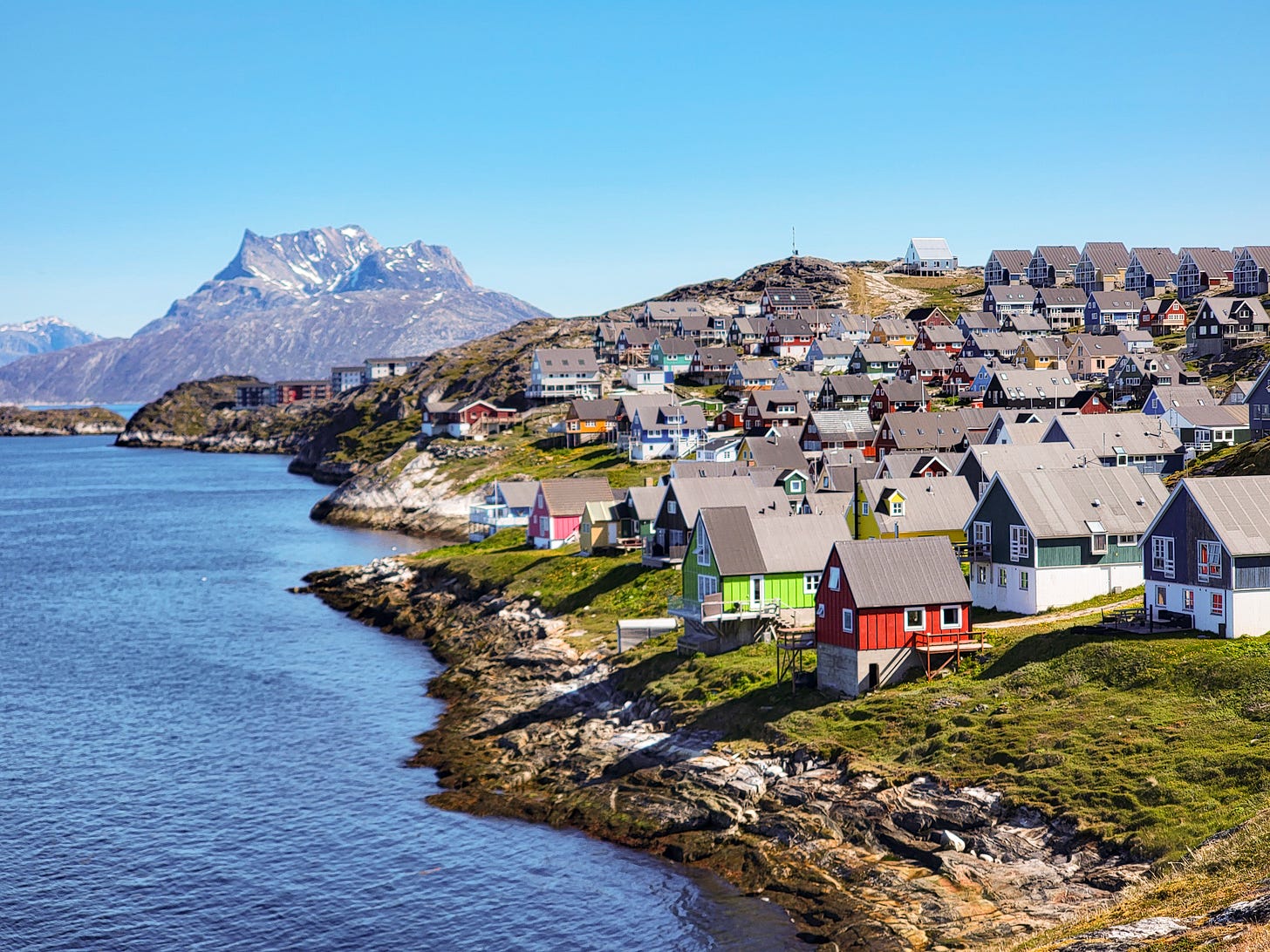
I did not forget that I wanted chocolate, so on our return, we stopped at the supermarket, and picked up some local goodies to enjoy on the ship.
A final fun fact about Greenland: You can’t drive from one settlement to another. There aren’t any roads connecting towns. If you’d like to visit elsewhere, you’ll need to catch an iceberg, or take a boat.
Free Reading
Check out these escapist reads before they’re gone!


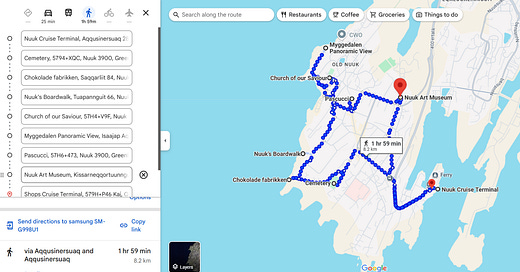



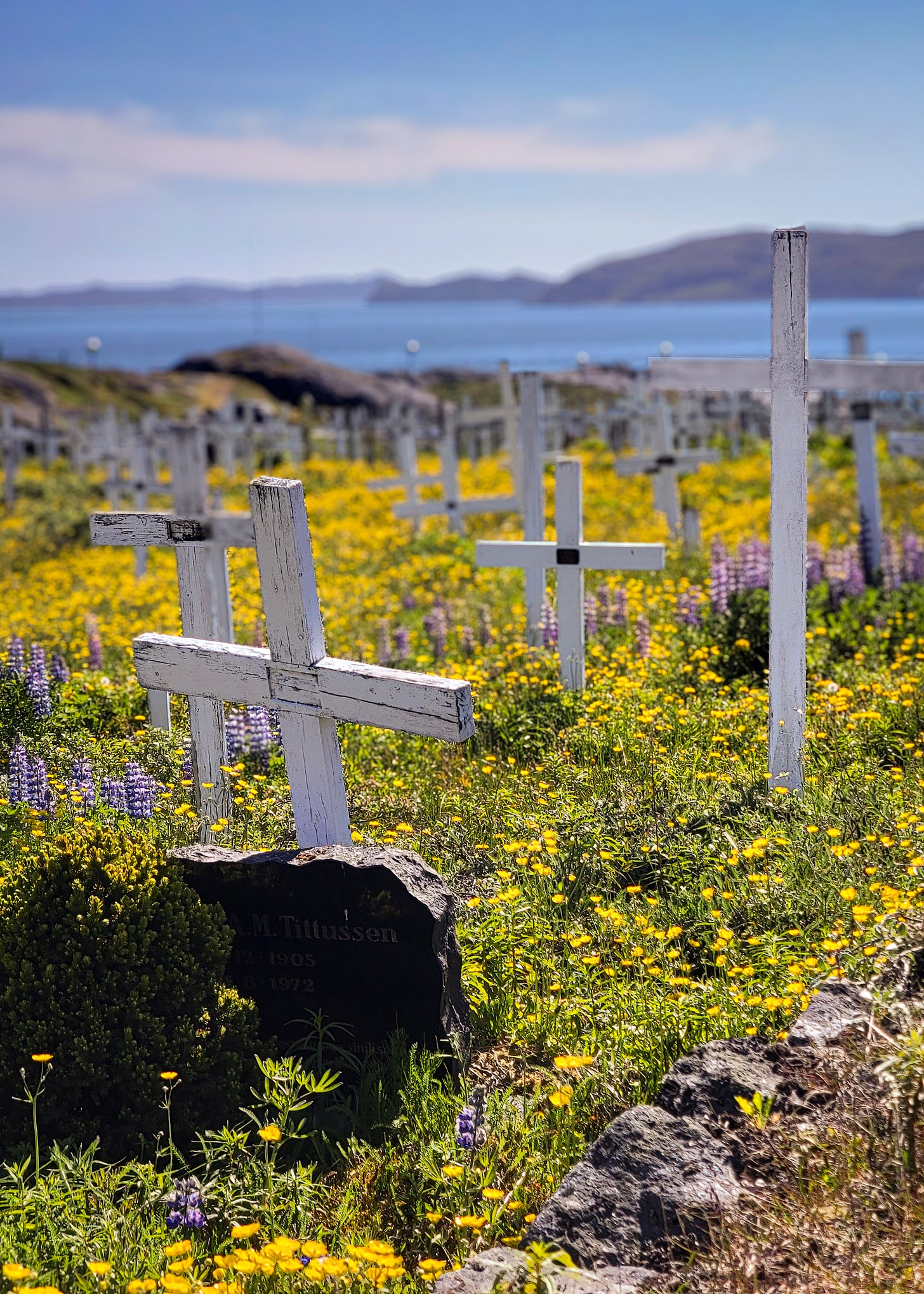


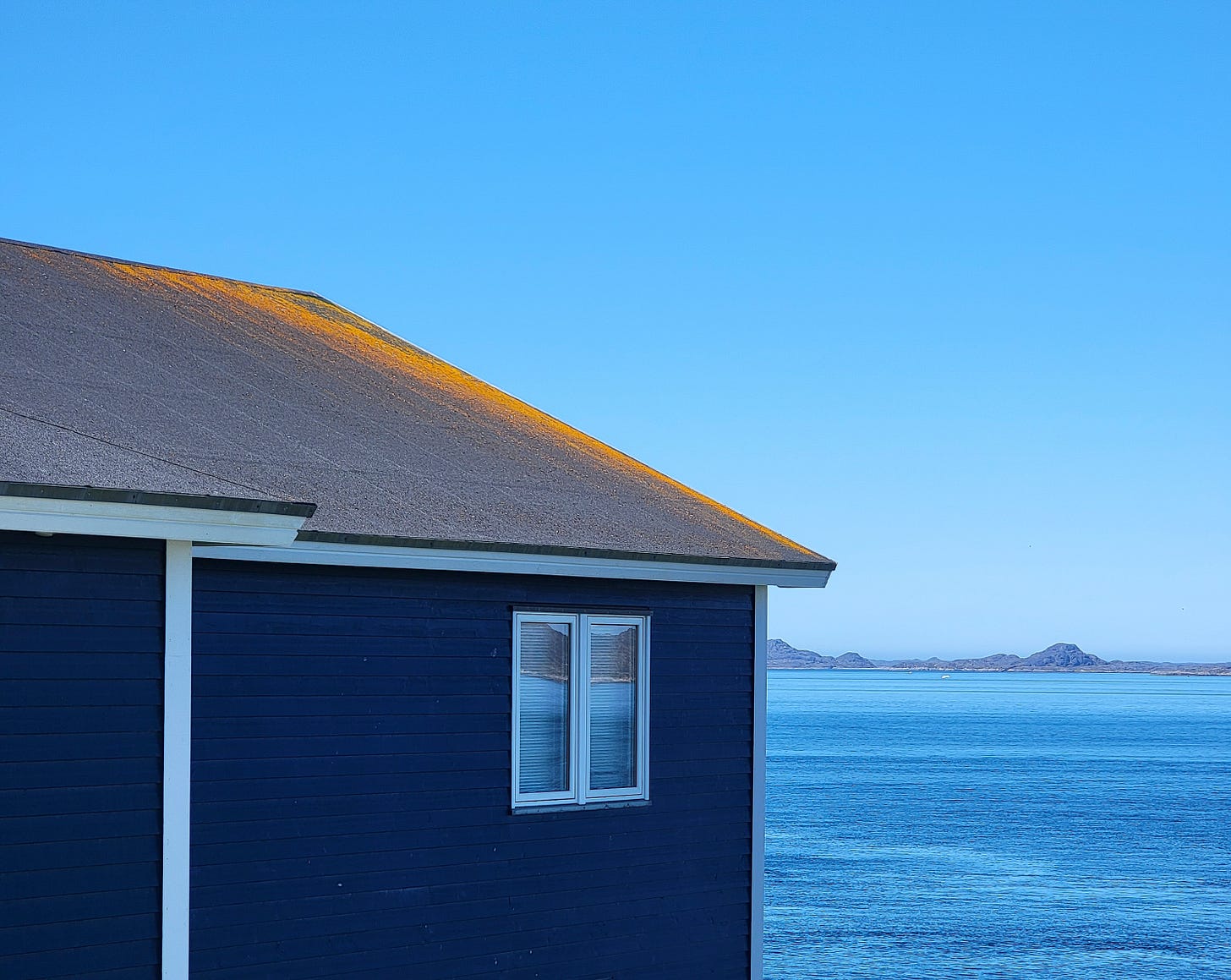
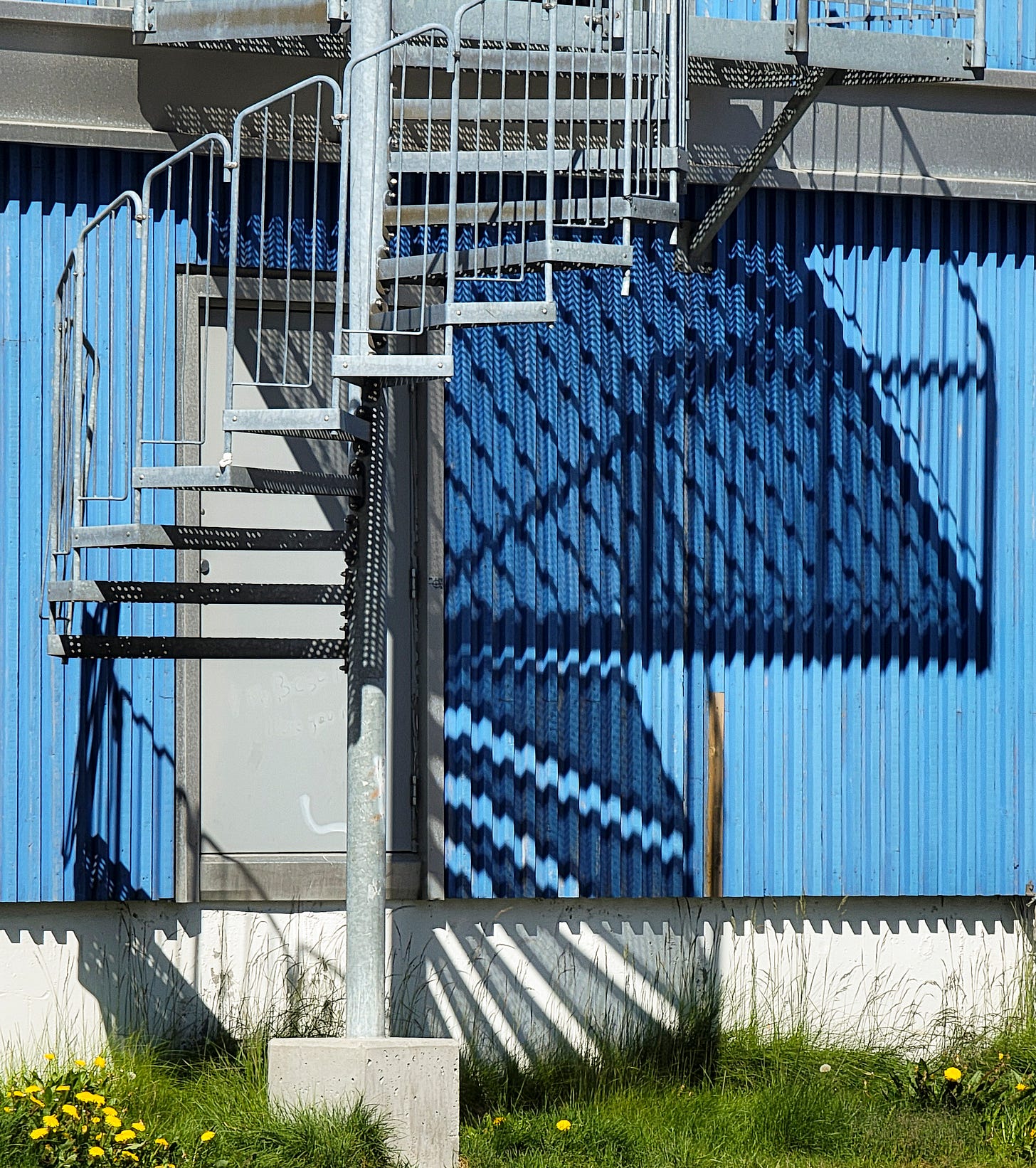
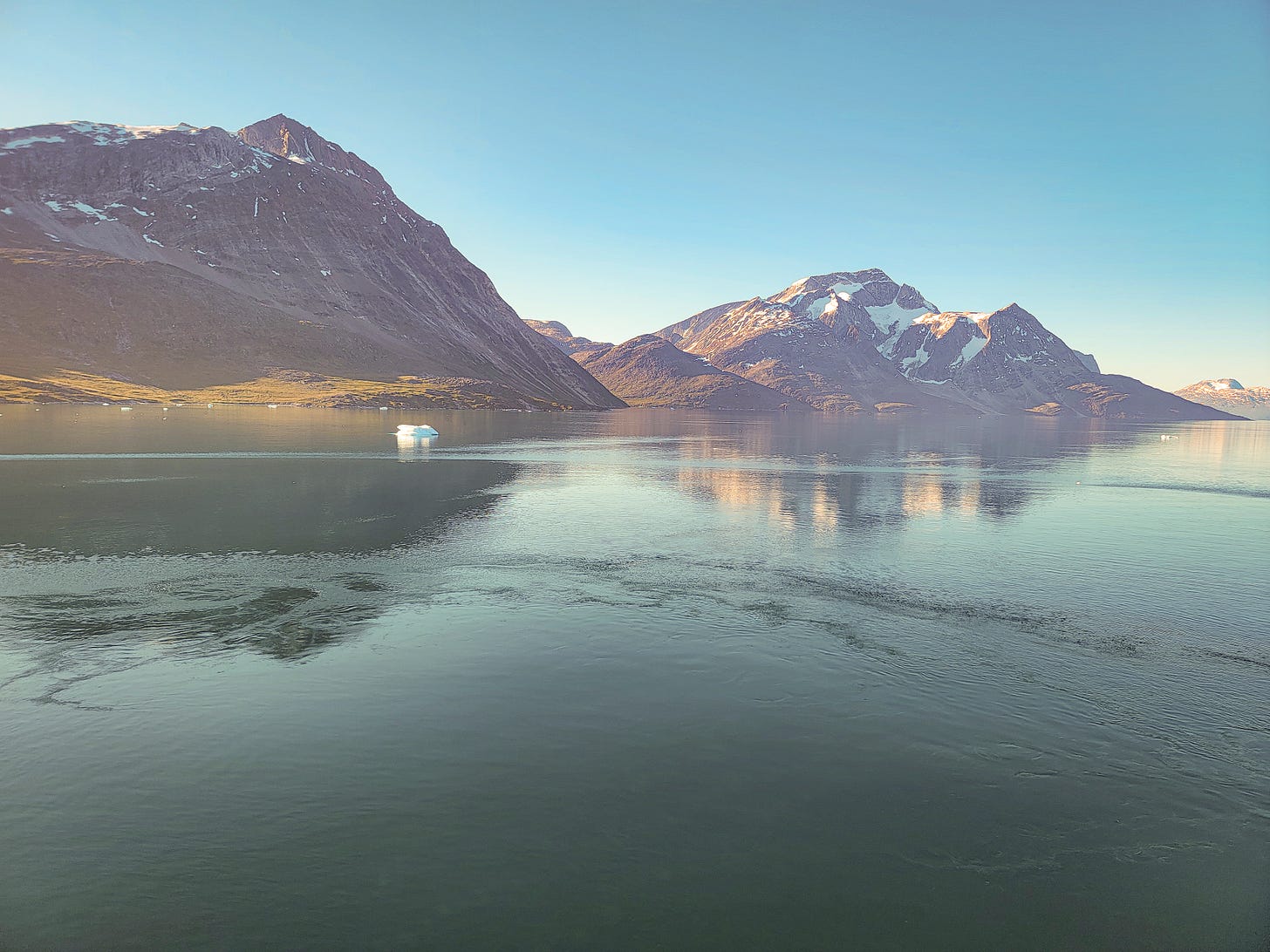

Your photos are wonderful! The clarity of the colors and atmosphere ❤️🔥. I really enjoyed this step